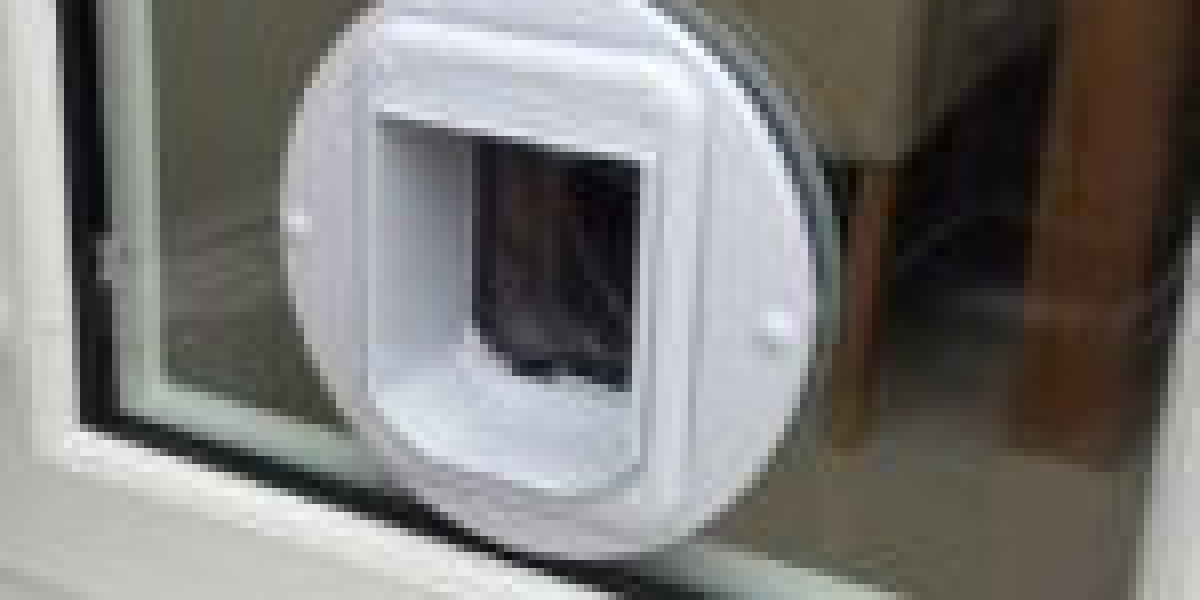
The Purrfect Passage: Expert Tips for Cat Flap Installation
For cat owners, the desire to supply their feline companions with freedom and self-reliance while preserving the security and comfort of their home is a common aspiration. A cat flap, relatively a simple service, provides simply that-- allowing your cat to come and go as they please without needing you to play doorman. Nevertheless, an inadequately set up cat flap can result in draughts, security vulnerabilities, and frustrated felines. For that reason, understanding the subtleties of cat flap installation is essential for both your cat's wellness and your peace of mind.
This post serves as an extensive guide to cat flap installation, offering expert tips and suggestions to ensure a smooth and successful task. Whether you're a skilled DIY lover or a first-timer, this guide will equip you with the understanding to create the purrfect passage for your beloved cat.
Picking the Right Cat Flap: The First Step to Success
Before you even think about tools and design templates, it is important to choose the best cat flap for your requirements and your home. The marketplace offers a diverse variety of alternatives, each with its own set of functions and advantages. Think about these aspects when making your selection:
- Type of Cat Flap: Cat flaps are not a one-size-fits-all service. They come in various types, each offering various levels of security and benefit:
- Standard Manual Cat Flaps: These are the most basic and most cost effective options, allowing any cat (or little animal) to enter and exit. They are suitable for low-security environments.
- Magnetic Cat Flaps: These flaps react to a magnet connected to your cat's collar. They use slightly much better security by preventing stray animals from going into.
- Infrared Cat Flaps: Similar to magnetic cat flap installation flaps, these use an infrared sensing unit that checks out a special collar tag. They are more safe than magnetic flaps and less vulnerable to interference.
- Microchip Cat Flaps: The most sophisticated alternative, these flaps are activated by your cat's distinct microchip, ensuring only your pet emergency door installation (check out this blog post via Repairmywindowsanddoors) can gain entry. This offers the greatest level of security and control, avoiding unwanted animals from entering your home.
- Product and Durability: Cat flaps are usually made from plastic or aluminium.
- Plastic flaps are normally more budget-friendly and lighter but may be less long lasting and more susceptible to weathering.
- Aluminium flaps are more robust, weather-resistant, and safe and secure, typically including a stronger locking mechanism.
- Size of Your Cat: Ensure the flap opening is large enough for your cat to pass through easily without having a hard time. Consider your cat's size and breed when selecting. Procedure your cat from chest to ground and include a number of inches for comfy clearance.
- Installation Location: Where will you be installing the cat flap? Doors, walls, and windows each present different installation obstacles and need particular kinds of cat flaps or extra accessories like tunnels for thicker walls.
- Budget plan: Cat flaps range in price from basic manual models to modern microchip variations. Set a budget plan and think about the long-term worth and security advantages when making your choice.
Preparation is Paramount: Setting Yourself Up for Success
Once you have picked the best cat flap, correct preparation is essential to a smooth installation. Hurrying into the process can cause errors and frustration. Put in the time to plan and gather whatever you require in advance:
Choosing the Right Location: Carefully consider the location for your cat flap.
- Security: Choose a place that is not quickly available to intruders and ideally far from public view.
- Ease of access for Your Cat: Ensure the area is quickly available for your cat, both within and outside. Consider the height from the ground and any obstacles.
- Convenience for You: Select a place that is practical for access and maintenance but doesn't interrupt the circulation of your home.
- Avoiding Utilities: Check for any surprise wires, pipelines, or structural elements within the wall or door where you plan to install the flap.
Gathering the Necessary Tools and Materials: Having all the right tools at hand will make the installation process much simpler. Necessary tools typically include:
- Cat flap package: This should consist of the cat flap itself, a template, screws, and possibly a tunnel extension depending upon the design and installation type.
- Pencil and ruler/tape step: For marking and measuring precisely.
- Drill: With suitable drill bits for pilot holes and possibly larger bits for cutting if needed by your chosen method.
- Jigsaw or Keyhole saw: For cutting the opening for the cat flap (depending upon material and installation approach).
- Screwdriver: To secure the cat flap in place (often a Phillips head screwdriver).
- Safety glasses and gloves: For safety during cutting and drilling.
- Sealant (optional): To seal around the cat flap and avoid draughts and water ingress, particularly for external doors and walls.
- Spirit level (optional): To ensure the cat flap is set up directly.
Determining and Marking: Accuracy is crucial for a proper fit.
- Use the design template offered: Most cat flap packages include a design template. Utilize this to precisely mark the cutout area on your picked area.
- Consider your cat's height: Position the design template at a suitable height for your cat. The bottom of the flap must be low enough for comfy entry and exit however not too low that it enables rain or dirt to get in quickly.
- Double-check measurements: Before you start cutting, confirm all your measurements and markings to prevent errors.
Step-by-Step Installation in a Wooden Door (Example)
Installing a cat flap in a wooden door is a common DIY project. Here's a basic detailed guide:
- Mark the Cutout: Tape the template provided with your cat flap kit onto the door at the preferred place. Utilize a pencil to trace the outline of the template onto the door.
- Drill Pilot Holes: Using a drill and a drill bit somewhat bigger than the width of your jigsaw blade (or keyhole saw), drill pilot holes at each corner of the significant outline and potentially a few along the straight edges to make beginning the jigsaw much easier.
- Cut the Opening: Using a jigsaw or keyhole saw, thoroughly cut along the marked summary, connecting the pilot holes. Take your time and follow the line properly. Ensure you use shatterproof glass and gloves during this step.
- Test Fit and Sand (if needed): Before fully inserting the cat flap, test fit it in the opening. If it's too tight, gently sand down any rough edges of the cutout until the flap fits snugly.
- Insert and Secure the Cat Flap: Place the two halves of the cat flap (inner and external frame) into the opening from either side of the door. Line up the screw holes.
- Screw Together: Using the screws provided, tighten up the two halves of the cat flap together. Do not overtighten, as this might damage the door or the cat flap.
- Seal (Optional): Apply sealant around the edges of the cat flap where it fulfills the door frame for included weatherproofing and insulation.
Installation Considerations for Different Materials
While wood doors are reasonably straightforward, setting up cat flaps into other products needs various methods:
- Glass Doors and Windows: Installing a cat flap in glass needs specialized tools and proficiency. It is highly advised to employ a professional glazier to cut and install a cat flap in glass. Attempting this yourself can be hazardous and risks shattering the glass.
- UPVC Doors: UPVC doors frequently have actually reinforced panels or might include metal elements. Installation can be complex and might require professional support. Carefully inspect the door's construction before attempting DIY installation or consult the door producer's guidelines.
- Walls: Installing a cat door in sliding door flap in a wall needs developing a tunnel through the wall thickness. This usually includes acquiring a tunnel extension package that matches the depth of your wall. The installation process resembles door installation but needs careful preparation and potentially more extensive cutting and sealing.
Post-Installation Tips: Welcoming Your Cat to Freedom
As soon as the cat flap is set up, the task isn't rather ended up. Here are some tips for helping your cat door contractor change and maximizing your brand-new cat flap:
- Introduce the Cat Flap Gradually: Don't expect your cat to use the flap immediately. Start by propping the flap open and motivating your cat to walk through it with treats and favorable support.
- Entice with Treats and Toys: Place deals with or toys on either side of the flap to incentivize your insured cat flap installation to explore and utilize it.
- Patience is Key: Some felines adapt quickly, while others may take some time. Be patient and avoid forcing your cat through the flap, which can develop negative associations.
- Inspect for Draughts and Security: After installation, look for any draughts or gaps around the cat flap. Ensure it is securely fitted and working properly.
- Regular Maintenance: Keep the cat flap clean and complimentary of debris. Occasionally check the locking mechanism and hinges to ensure they are operating efficiently.
By following these tips and taking your time with the installation process, you can develop a safe, hassle-free, and inviting cat flap for your feline good friend, enhancing their freedom and improving their life while preserving the comfort and security of your home.
Regularly Asked Questions (FAQs) about Cat Flap Installation
Q: Can I set up a cat flap in any door?
A: While cat flaps can be set up in many kinds of doors, some need more customized methods or professional aid. Wooden doors are the simplest for DIY installation. Glass doors and UPVC doors may require professional installation.
Q: How high should I set up a cat flap?
A: The perfect height depends on your cat's size, but usually, the bottom of the flap must be around 10-15 cm (4-6 inches) from the ground. This allows most felines to pass through conveniently without having to crouch too low.
Q: What tools do I actually require for cat flap installation?
A: Essential tools include a drill, jigsaw or keyhole saw, screwdriver, pencil, ruler/tape procedure, and shatterproof glass and gloves. A sealant gun and sealant are recommended for external doors and walls.
Q: How long does it take to install a cat flap?
A: For a basic installation in a wood door, it can take anywhere from 1 to 3 hours, depending on your DIY experience and the intricacy of the door. Installation in other products or walls may take longer.
Q: What if I am not positive in my DIY skills?
A: If you are unpleasant with DIY jobs, it is always best to employ a professional handyman or carpenter to set up the cat flap for you. This ensures an appropriate and safe installation, specifically for more complex installations like glass or UPVC doors and walls.
Q: How can I stop roaming felines from using my adjustable cat flap installation flap?
A: Microchip cat flaps are the most efficient way to avoid stray animals from entering your home as they only open for your cat's registered microchip. Magnetic and infrared flaps provide some, but less reputable, security.
Q: Do cat flaps allow draughts?
A: Modern cat flaps are created with draught-excluding features like brushes or magnetic closures. However, correct installation and sealing are vital to reduce draughts.
Q: How do I train my cat to utilize a cat flap?
A: Patience and favorable reinforcement are essential. Start by propping the flap open, utilizing deals with and toys to tempt your cat through. Gradually reduce the openness of the flap as your cat gets more comfortable.
Q: Can I install a cat flap in a wall?
A: Yes, cat flaps can be installed in walls. This usually needs a tunnel extension package to link the inner and outer frames through the thickness of the wall. Wall installations might be more complicated and need cautious preparation.
Q: What maintenance is required for a cat flap?
A: Regularly clean the flap and surrounding area to get rid of dirt and particles. Examine the hinges and locking system regularly and tighten up screws if essential. Oil hinges with silicone spray if they become stiff.








